.css-s5s6ko{margin-right:42px;color:#F5F4F3;}@media (max-width: 1120px){.css-s5s6ko{margin-right:12px;}} AI that works. Coming June 5, Asana redefines work management—again. .css-1ixh9fn{display:inline-block;}@media (max-width: 480px){.css-1ixh9fn{display:block;margin-top:12px;}} .css-1uaoevr-heading-6{font-size:14px;line-height:24px;font-weight:500;-webkit-text-decoration:underline;text-decoration:underline;color:#F5F4F3;}.css-1uaoevr-heading-6:hover{color:#F5F4F3;} .css-ora5nu-heading-6{display:-webkit-box;display:-webkit-flex;display:-ms-flexbox;display:flex;-webkit-align-items:center;-webkit-box-align:center;-ms-flex-align:center;align-items:center;-webkit-box-pack:start;-ms-flex-pack:start;-webkit-justify-content:flex-start;justify-content:flex-start;color:#0D0E10;-webkit-transition:all 0.3s;transition:all 0.3s;position:relative;font-size:16px;line-height:28px;padding:0;font-size:14px;line-height:24px;font-weight:500;-webkit-text-decoration:underline;text-decoration:underline;color:#F5F4F3;}.css-ora5nu-heading-6:hover{border-bottom:0;color:#CD4848;}.css-ora5nu-heading-6:hover path{fill:#CD4848;}.css-ora5nu-heading-6:hover div{border-color:#CD4848;}.css-ora5nu-heading-6:hover div:before{border-left-color:#CD4848;}.css-ora5nu-heading-6:active{border-bottom:0;background-color:#EBE8E8;color:#0D0E10;}.css-ora5nu-heading-6:active path{fill:#0D0E10;}.css-ora5nu-heading-6:active div{border-color:#0D0E10;}.css-ora5nu-heading-6:active div:before{border-left-color:#0D0E10;}.css-ora5nu-heading-6:hover{color:#F5F4F3;} Get early access .css-1k6cidy{width:11px;height:11px;margin-left:8px;}.css-1k6cidy path{fill:currentColor;}
- Product overview
- All features
- App integrations

CAPABILITIES
- project icon Project management
- Project views
- Custom fields
- Status updates
- goal icon Goals and reporting
- Reporting dashboards
- workflow icon Workflows and automation
- portfolio icon Resource management
- Time tracking
- my-task icon Admin and security
- Admin console
- asana-intelligence icon Asana Intelligence
- list icon Personal
- premium icon Starter
- briefcase icon Advanced
- Goal management
- Organizational planning
- Campaign management
- Creative production
- Marketing strategic planning
- Request tracking
- Resource planning
- Project intake
- View all uses arrow-right icon
- Project plans
- Team goals & objectives
- Team continuity
- Meeting agenda
- View all templates arrow-right icon
- Work management resources Discover best practices, watch webinars, get insights
- What's new Learn about the latest and greatest from Asana
- Customer stories See how the world's best organizations drive work innovation with Asana
- Help Center Get lots of tips, tricks, and advice to get the most from Asana
- Asana Academy Sign up for interactive courses and webinars to learn Asana
- Developers Learn more about building apps on the Asana platform
- Community programs Connect with and learn from Asana customers around the world
- Events Find out about upcoming events near you
- Partners Learn more about our partner programs
- Support Need help? Contact the Asana support team
- Asana for nonprofits Get more information on our nonprofit discount program, and apply.
Featured Reads

- Project management |
- What is 8D? A template for efficient pr ...
What is 8D? A template for efficient problem-solving
How you respond when problems arise is one of the most defining qualities of a manager. Luckily, there are tools you can use to master problem-solving. The 8D method of problem-solving combines teamwork and basic statistics to help you reach a logical solution and prevent new issues from arising.
You’ve spent months overseeing the development of your company's newest project. From initiation, planning, and execution, you’re confident this may be your best work yet.
Until the feedback starts rolling in.
There’s no sugar-coating it—things don’t always go as planned. But production or process issues are hardly a signal to throw in the towel. Instead, focus on honing your problem-solving skills to find a solution that keeps it from happening again.
The 8D method of problem solving emphasizes the importance of teamwork to not only solve your process woes but prevent new ones from occurring. In this guide, we’ll break down what 8D is, how to use this methodology, and the benefits it can give to you and your team. Plus, get an 8D template to make solving your issue easier.
What is 8D?
The eight disciplines (8D) method is a problem-solving approach that identifies, corrects, and eliminates recurring problems. By determining the root causes of a problem, managers can use this method to establish a permanent corrective action and prevent recurring issues.
How do you use the 8D method?
The 8D method is a proven strategy for avoiding long-term damage from recurring problems. If you’re noticing issues in your workflow or processes, then it’s a good time to give this problem-solving method a try.
To complete an 8D analysis, follow “the eight disciplines” to construct a statistical analysis of the problem and determine the best solution.
The eight disciplines of problem-solving
8D stands for the eight disciplines you will use to establish an 8D report. As you may notice, this outline starts with zero, which makes nine total disciplines. The “zero stage” was developed later as an initial planning stage.
To illustrate these steps, imagine your organization experienced a decline in team innovation and productivity this past year. Your stakeholders have noticed and want to see changes implemented within the next six months. Below, we’ll use the 8D process to uncover a morale-boosting solution.
![8d problem solving powerpoint presentation [inline illustration] D8 problem solving approach (infographic)](https://assets.asana.biz/transform/6ab7c188-3258-4d2e-afe6-9a4a084cc09f/inline-productivity-8d-template-1-2x?io=transform:fill,width:2560&format=webp)
D0: Prepare and plan
Before starting the problem-solving process, evaluate the problem you want to solve. Understanding the background of the problem will help you identify the root cause in later steps.
Collect information about how the problem has affected a process or product and what the most severe consequences may be. Planning can include:
Gathering data
Determining the prerequisites for solving the problem
Collecting feedback from others involved
![8d problem solving powerpoint presentation [inline illustration] D0 Planning (example)](https://assets.asana.biz/transform/abc3621d-e1ae-47ff-b731-0ee38cff99e9/inline-productivity-8d-template-2-2x?io=transform:fill,width:2560&format=webp)
If we look back at our example, you may want to figure out whether this decline in morale is organization-wide or only applies to a few departments. Consider interviewing a few employees from different departments and levels of management to gain some perspective. Next, determine what knowledge and skills you will need to solve this lapse in productivity.
D1: Form your team
Create a cross-functional team made up of people who have knowledge of the various products and workflows involved. These team members should have the skills needed to solve the problem and put corrective actions in place.
Steps in this discipline may include:
Appointing a team leader
Developing and implementing team guidelines
Determining team goals and priorities
Assigning individual roles
Arranging team-building activities
![8d problem solving powerpoint presentation [inline illustration] D1 Team members (example)](https://assets.asana.biz/transform/51986017-5150-4dd4-940c-252cd0eb8ba5/inline-productivity-8d-template-3-2x?io=transform:fill,width:2560&format=webp)
From our example, a solid team would consist of people with first-hand experience with the issues—like representatives from all departments and key people close to workshop-level work. You may also want to pull someone in from your HR department to help design and implement a solution. Most importantly, make sure the people you choose want to be involved and contribute to the solution.
D2: Identify the problem
You may have a good understanding of your problem by now, but this phase aims to break it down into clear and quantifiable terms by identifying the five W’s a and two H’s (5W2H):
Who first reported the problem?
What is the problem about?
When did it occur and how often?
Where did it occur (relating to the sector, supplier, machine, or production line involved)?
Why is solving the problem important?
How was the problem first detected?
How many parts/units/customers are affected?
![8d problem solving powerpoint presentation [inline illustration] D2 Problem statement & description (example)](https://assets.asana.biz/transform/9825ecd6-2bd3-4559-a68c-b1ae8aca2e52/inline-productivity-8d-template-4-2x?io=transform:fill,width:2560&format=webp)
Use your team’s insights to answer these questions. From our example, your team may conclude that:
Employees feel overwhelmed with their current workload.
There is no real structure or opportunity to share new ideas.
Managers have had no training for meetings or innovation settings.
Disgruntled employees know they can achieve more—and want to achieve more—even if they seem disengaged.
Once you answer these questions, record an official problem statement to describe the issue. If possible, include photos, videos, and diagrams to ensure all parties have a clear understanding of the problem. It may also help to create a flowchart of the process that includes various steps related to the problem description.
D3: Develop an interim containment plan
Much like we can expect speedy first aid after an accident, your team should take immediate actions to ensure you contain the problem—especially if the problem is related to customer safety.
An interim containment plan will provide a temporary solution to isolate the problem from customers and clients while your team works to develop a permanent corrective action. This band-aid will help keep your customers informed and safe—and your reputation intact.
![8d problem solving powerpoint presentation [inline illustration] D3 Interim containment action (example)](https://assets.asana.biz/transform/d6279c36-ccc6-4de3-89d2-f221632a1059/inline-productivity-8d-template-5-2x?io=transform:fill,width:2560&format=webp)
Because your findings revealed workers were overworked and managers lacked training, your team suggests scheduling a few mandatory training sessions for leaders of each department covering time and stress management and combating burnout . You may also want to have a presentation outlining the topics of this training to get key managers and stakeholders interested and primed for positive upcoming changes.
D4: Verify root causes and escape points
Refer back to your findings and consult with your team about how the problem may have occurred. The root cause analysis involves mapping each potential root cause against the problem statement and its related test data. Make sure to test all potential causes—fuzzy brainstorming and sloppy analyses may cause you to overlook vital information.
![8d problem solving powerpoint presentation [inline illustration] D4 Root cause & escape points (example)](https://assets.asana.biz/transform/301717c6-0434-4c88-addf-d500dc23ae87/inline-productivity-8d-template-6-2x?io=transform:fill,width:2560&format=webp)
In our example, focus on the “why” portion of the 5W2H. You and your team identify six root causes:
Managers have never had any training
There is a lack of trust and psychological safety
Employees don’t understand the objectives and goals
Communication is poor
Time management is poor
Employees lack confidence
In addition to identifying the root causes, try to pinpoint where you first detected the problem in the process, and why it went unnoticed. This is called the escape point, and there may be more than one.
D5: Choose permanent corrective actions
Work with your team to determine the most likely solution to remove the root cause of the problem and address the issues with the escape points. Quantitatively confirm that the selected permanent corrective action(s) (PCA) will resolve the problem for the customer.
Steps to choosing a PCA may include:
Determining if you require further expertise
Ensuring the 5W2Hs are defined correctly
Carrying out a decision analysis and risk assessment
Considering alternative measures
Collecting evidence to prove the PCA will be effective
![8d problem solving powerpoint presentation [inline illustration] D5 Permanent corrective action (example)](https://assets.asana.biz/transform/53509966-18dd-4bb4-88a1-c7ca940fde3f/inline-productivity-8d-template-7-2x?io=transform:fill,width:2560&format=webp)
Your team decides to roll out the training used in the interim plan to all employees, with monthly company-wide workshops on improving well-being. You also plan to implement meetings, innovation sessions, and team-coaching training for managers. Lastly, you suggest adopting software to improve communication and collaboration.
D6: Implement your corrective actions
Once all parties have agreed on a solution, the next step is to create an action plan to remove the root causes and escape points. Once the solution is in effect, you can remove your interim containment actions.
After seeing success with the training in the interim phase, your stakeholders approve all of your team’s proposed PCAs. Your representative from HR also plans to implement periodic employee wellness checks to track employee morale .
![8d problem solving powerpoint presentation [inline illustration] D6 PCA implementation plan (example)](https://assets.asana.biz/transform/ca68af4a-afa7-4be4-93cb-8a8321eb5172/inline-productivity-8d-template-8-2x?io=transform:fill,width:2560&format=webp)
To ensure your corrective action was a success, monitor the results, customer, or employee feedback over a long period of time and take note of any negative effects. Setting up “controls” like employee wellness checks will help you validate whether your solution is working or more needs to be done.
D7: Take preventive measures
One of the main benefits of using the 8D method is the improved ability to identify necessary systematic changes to prevent future issues from occurring. Look for ways to improve your management systems, operating methods, and procedures to not only eliminate your current problem, but stop similar problems from developing later on.
![8d problem solving powerpoint presentation [inline illustration] D7 Preventive measure (example)](https://assets.asana.biz/transform/cdd7b133-fb80-4db7-8935-1285a6b62b69/inline-productivity-8d-template-9-2x?io=transform:fill,width:2560&format=webp)
Based on our example, the training your team suggested is now adopted in the new manager onboarding curriculum. Every manager now has a “meeting system” that all meetings must be guided by, and workloads and projects are managed as a team within your new collaboration software . Innovation is improving, and morale is at an all-time high!
D8: Celebrate with your team
The 8D method of problem-solving is impossible to accomplish without dedicated team members and first-class collaboration. Once notes, lessons, research, and test data are documented and saved, congratulate your teammates on a job well done! Make an effort to recognize each individual for their contribution to uncovering a successful solution.
![8d problem solving powerpoint presentation [inline illustration] 8D Team congratulations & reward (example)](https://assets.asana.biz/transform/d2055965-bf3d-4bf4-a1ea-a0a7c4bf8a32/inline-productivity-8d-template-10-2x?io=transform:fill,width:2560&format=webp)
8D report template and example
Check out our 8D report template below to help you record your findings as you navigate through the eight disciplines of problem solving. This is a formal report that can be used as a means of communication within companies, which makes for transparent problem-solving that you can apply to the entire production or process chain.
Benefits of using the 8D method
The 8D method is one of the most popular problem-solving strategies for good reason. Its strength lies in teamwork and fact-based analyses to create a culture of continuous improvement —making it one of the most effective tools for quality managers. The benefits of using the 8D method include:
Improved team-oriented problem-solving skills rather than relying on an individual to provide a solution
Increased familiarity with a problem-solving structure
A better understanding of how to use basic statistical tools for problem-solving
Open and honest communication in problem-solving discussions
Prevent future problems from occurring by identifying system weaknesses and solutions
Improved effectiveness and efficiency at problem-solving
Better collaboration = better problem solving
No matter how good a manager you are, production and process issues are inevitable. It’s how you solve them that separates the good from the great. The 8D method of problem solving allows you to not only solve the problem at hand but improve team collaboration, improve processes, and prevent future issues from arising.
Try Asana’s project management tool to break communication barriers and keep your team on track.
Related resources

3 visual project management layouts (and how to use them)

Grant management: A nonprofit’s guide

Everything you need to know about waterfall project management

Smooth product launches are simpler than you think

What do you think of this template?

Product details
The Eight Disciplines of Problem Solving (8D) is a problem-solving methodology designed to find the root cause of a problem, devise a short-term fix and implement a long-term solution to prevent recurring problems. When it’s clear that your product is defective or isn’t satisfying your customers, an 8D is an excellent first step to improving Quality and Reliability. The 8D problem solving process is a detailed, team-oriented approach to solving critical problems in the production process. The goals of this method are to find the root cause of a problem, develop containment actions to protect customers and take corrective action to prevent similar problems in the future. 8D has grown to be one of the most popular problem-solving methodologies used for Manufacturing, Assembly and Services around the globe. The 8D methodology offers engineering team a consistent, easy-to-learn and thorough approach to solving whatever problems might arise at various stages in your production process.
The main stages of the 8D process are: Establish a team, Define problem, Develop Containment Actions, Identify Root Cause, Establish Corrective Action, Implement Corrective Actions, Prevent Recurrence, Recognize Team Effort.
This template contains all the necessary tools to prepare for solving a problem using the 8D process. The first slide is presented in the form of honeycombs, each of which describes one of the stages of the process. You can also provide a short explanation for each step. The slide can be used by engineers when building a model for solving an equipment failure problem. For example, you can specify the sequence of actions in the event of a turbine breakdown and indicate an action plan for each of the participants in the process. The second and third slide of the template are made in the form of a horizontal time line. This slide can be used when building sequential models. Also, these slides will be useful for crisis managers when building a model for a company’s exit from a crisis situation. The third slide is designed as sequential blocks with 8D process. A special feature of this slide is the arrangement of blocks at different levels. This slide will be useful for marketing specialists when building a plan for an advertising campaign for a new product or a plan to solve the problem of a competitor’s launch of a product similar to yours. Team leaders can use this slide in weekly meetings with the development team. The structure of this slide is ideal for testing bugs and discussing new client requirements for a software product.
This template follows the latest design trends with a neutral color scheme. You can also change the color and font sizes so that this template can be used in your other presentations. The 8D process template will be primarily useful for software developers when testing programs. Also, this template can be used by service managers, production workers, specialists of construction organizations.
Related Products

Demand Planning

Infinity Ribbon
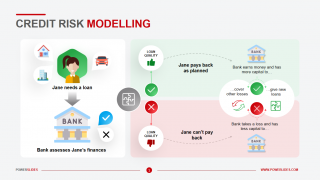
Credit Risk Modelling
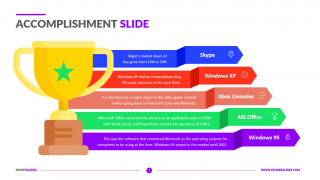
Accomplishment Slide
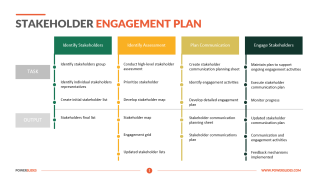
Stakeholder Engagement Plan
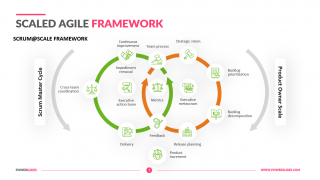
Scaled Agile Framework
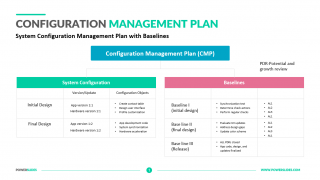
Configuration Management Plan
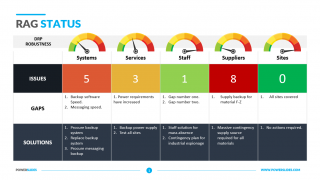
Project Estimate
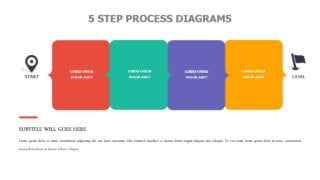
5 Step Process Diagrams
You dont have access, please change your membership plan., great you're all signed up..., verify your account.
PowerSlides.com will email you template files that you've chosen to dowload.
Please make sure you've provided a valid email address! Sometimes, our emails can end up in your Promotions/Spam folder.
Simply, verify your account by clicking on the link in your email.
Login with:

No products in the cart.
- Current vs Future State
- Business Startup
- Buyer Persona
- Project Management
- Risk Management
- Real Estate
- Supply Chain
- Stakeholder
- Value Chain
- Venn Diagrams
- Digital Marketing
- 30 60 90 Days Plan
- KPI Dashboard
- Gantt Chart
- SWOT Analysis
- Sign In / Sign Up
8D Process PowerPoint Presentation
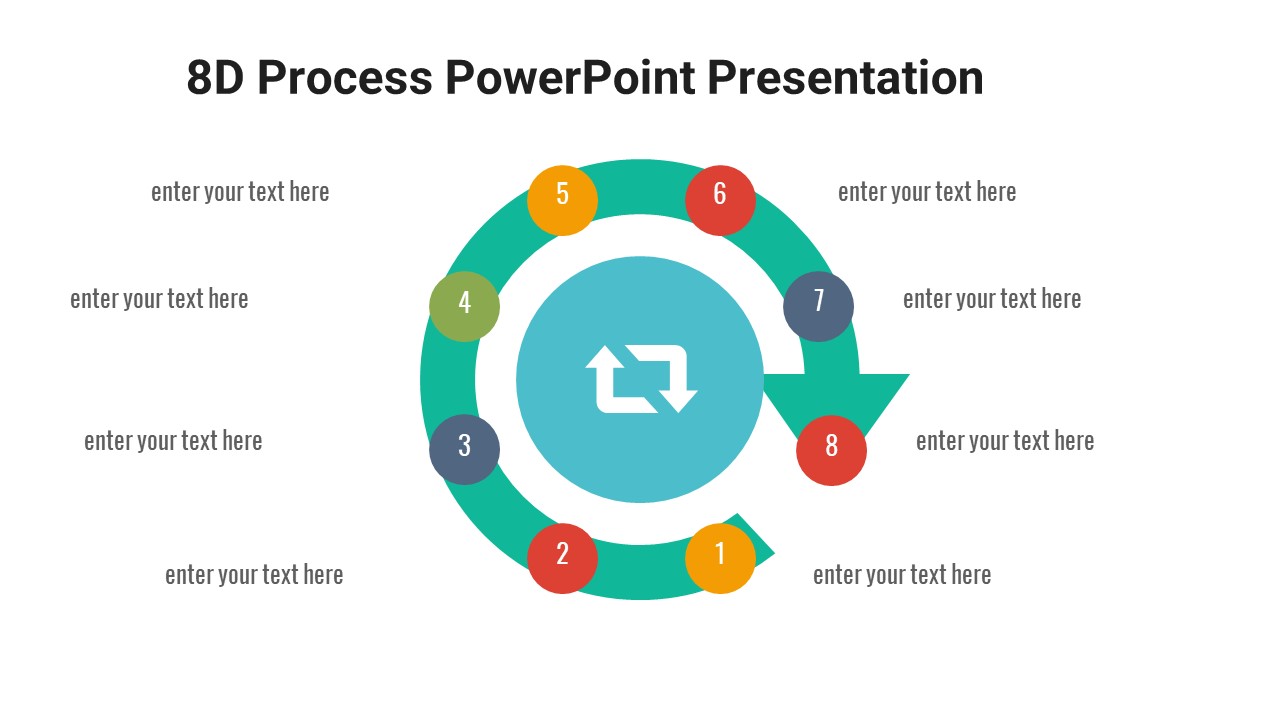
Description
- Reviews (0)
The 8D Process PowerPoint Presentation is a comprehensive tool designed to help businesses effectively address and resolve problems in their operations. This presentation template provides a step-by-step guide on how to implement the 8D (Eight Disciplines) problem-solving methodology, which is commonly used in industries such as manufacturing, healthcare, and technology.
With visually appealing slides and easy-to-follow instructions, this PowerPoint presentation allows users to understand the key components of the 8D Process, including Root Cause Analysis, Corrective Actions, and Preventive Measures. It also provides tips on how to create a cross-functional team to facilitate the problem-solving process and ensure long-term solutions.
Key Features:
1. Fully Editable Slides: The 8D Process PowerPoint Presentation includes fully editable slides that allow users to customize the content to suit their specific needs. This feature enables users to add their company logo, change colors, and modify the text on each slide.
2. Professional Design: The presentation template features a professional design with high-quality graphics and icons that enhance the overall visual appeal. This makes it easy for users to present complex problem-solving concepts in a clear and concise manner.
3. Easy-to-Follow Guide: The 8D Process PowerPoint Presentation includes a detailed guide on each step of the problem-solving process, making it ideal for both beginners and experienced professionals. Users can simply follow the instructions provided in the slides to implement the 8D methodology in their organization.
4. Cross-Functional Team Collaboration: The presentation template emphasizes the importance of creating a cross-functional team to address problems effectively. It provides tips on how to select team members from different departments and assign roles and responsibilities to ensure a collaborative approach to problem-solving.
Overall, the 8D Process PowerPoint Presentation is a valuable resource for businesses looking to improve their problem-solving capabilities and drive continuous improvement. Whether you are new to the 8D methodology or looking to enhance your existing knowledge, this presentation template is a must-have tool for your organization.
There are no reviews yet.
Write a review Cancel reply
Your email address will not be published. Required fields are marked *
Related products
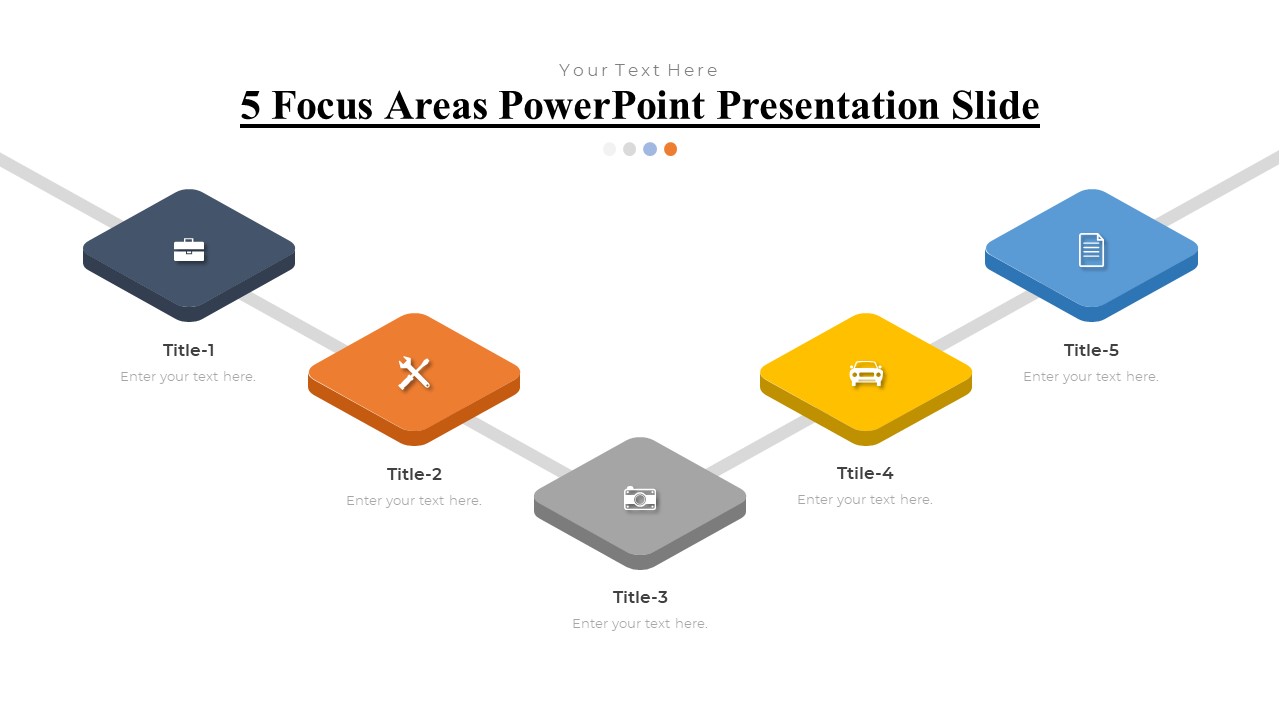

5 Focus Areas PowerPoint Presentation Slide
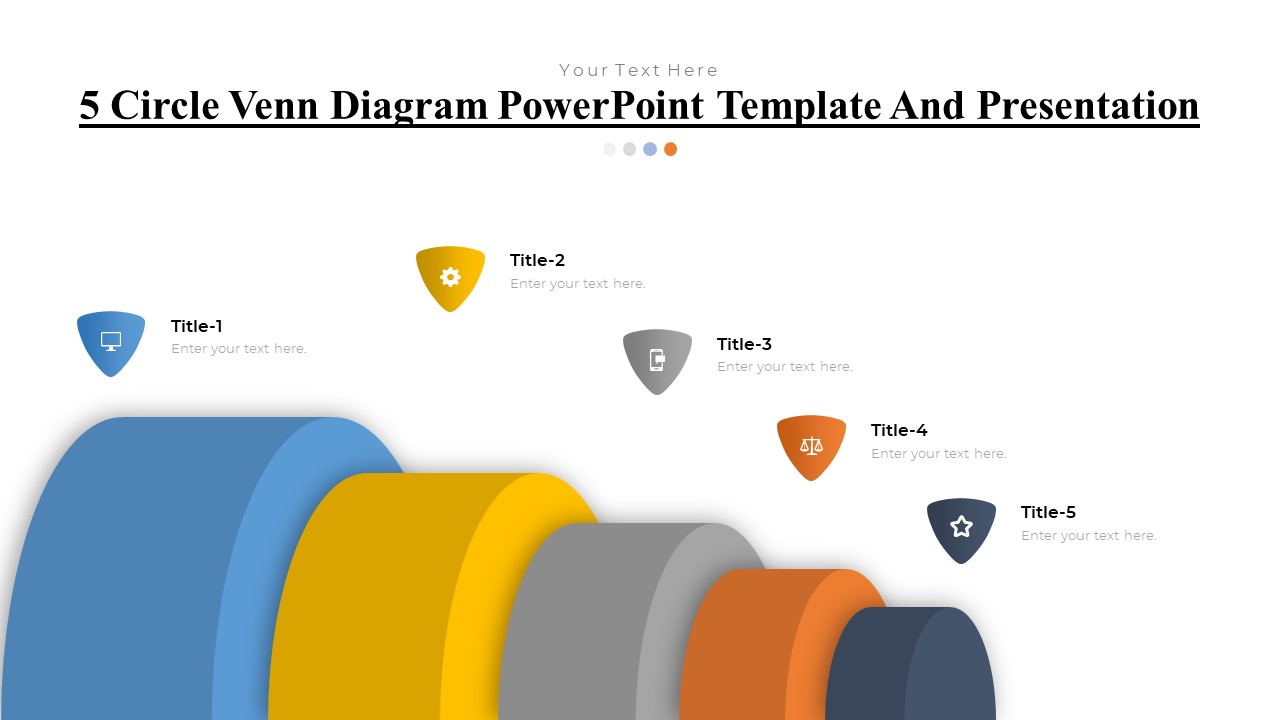
5 Circle Venn Diagram PowerPoint Template And Presentation
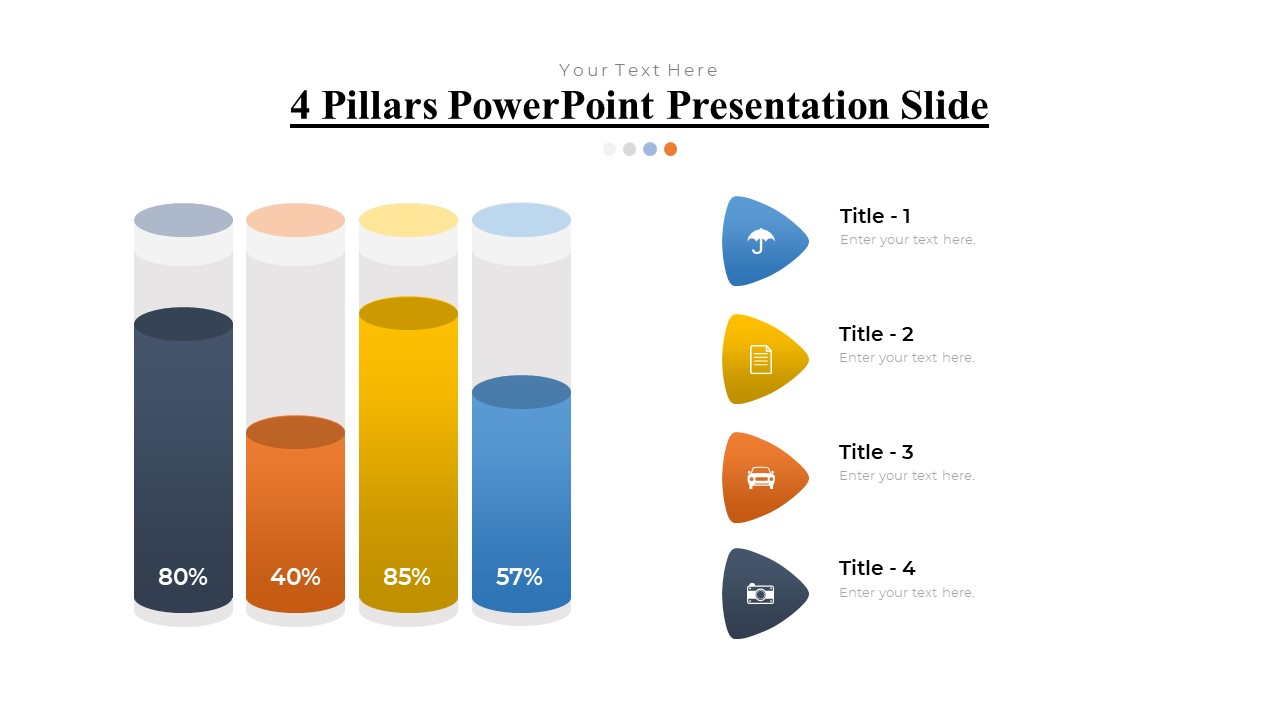
4 Pillars PowerPoint Presentation Slide
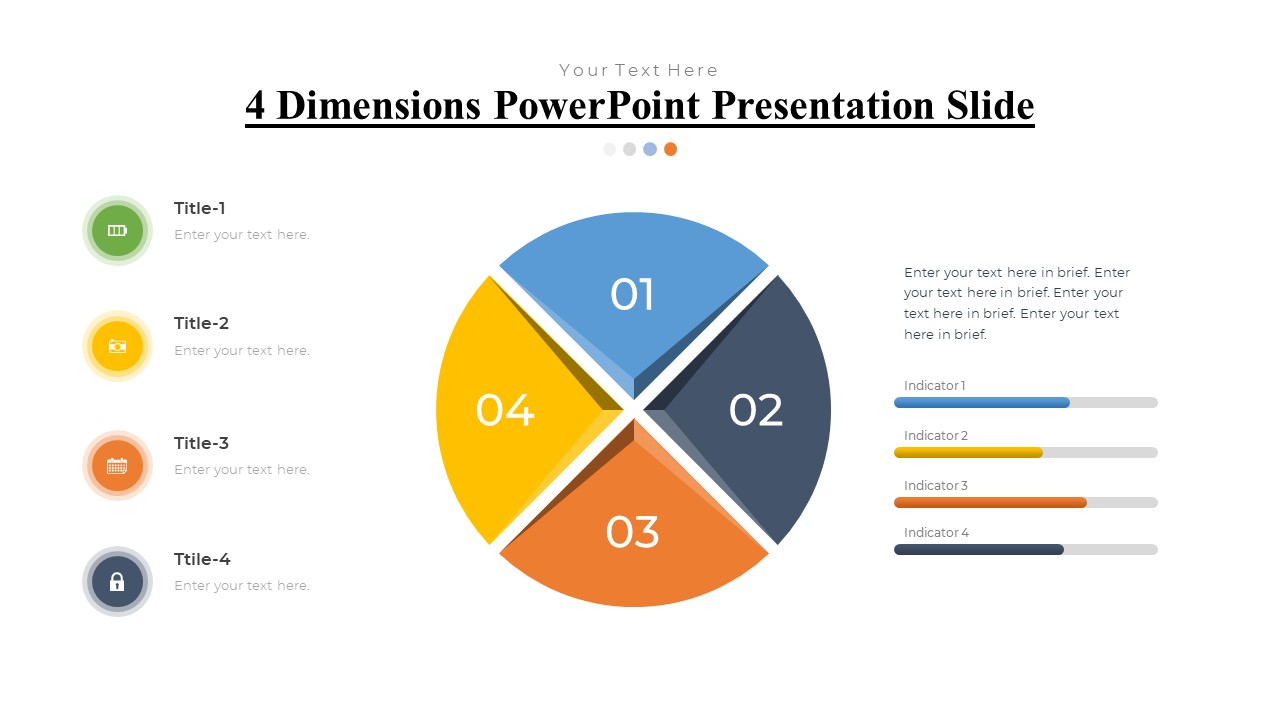
4 Dimensions PowerPoint Presentation Slide
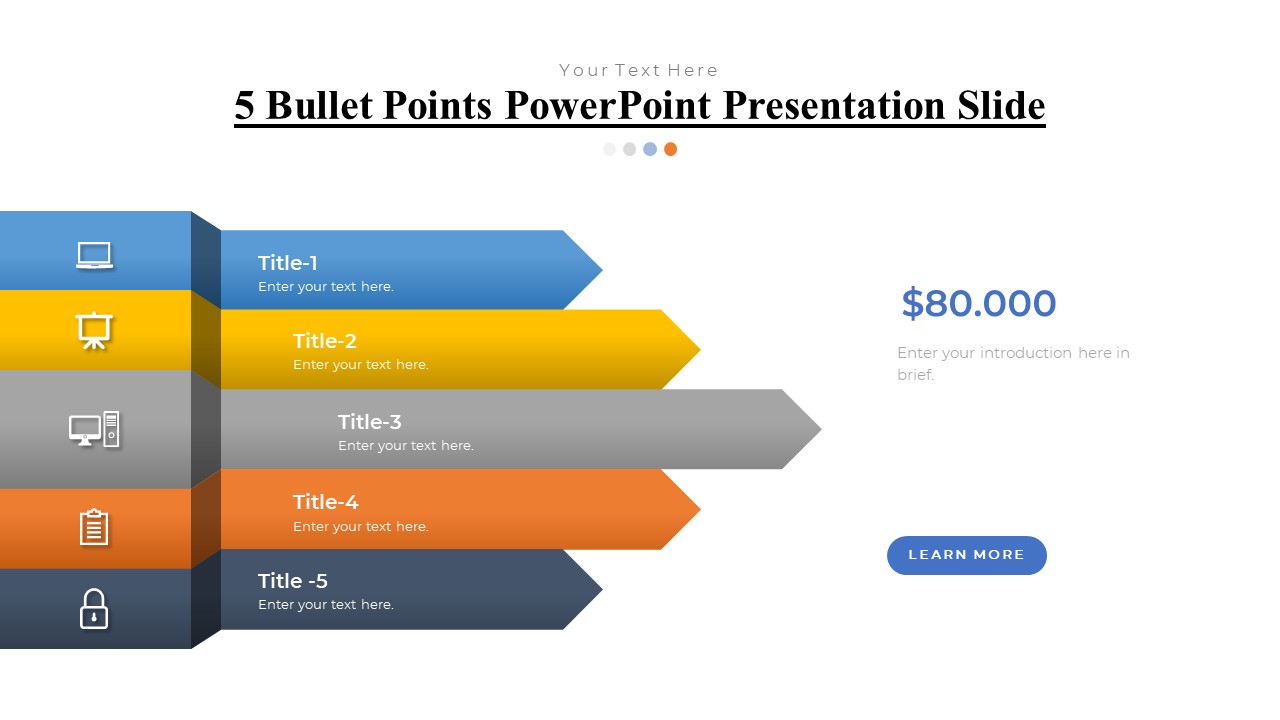
5 Bullet Points PowerPoint Presentation Slide
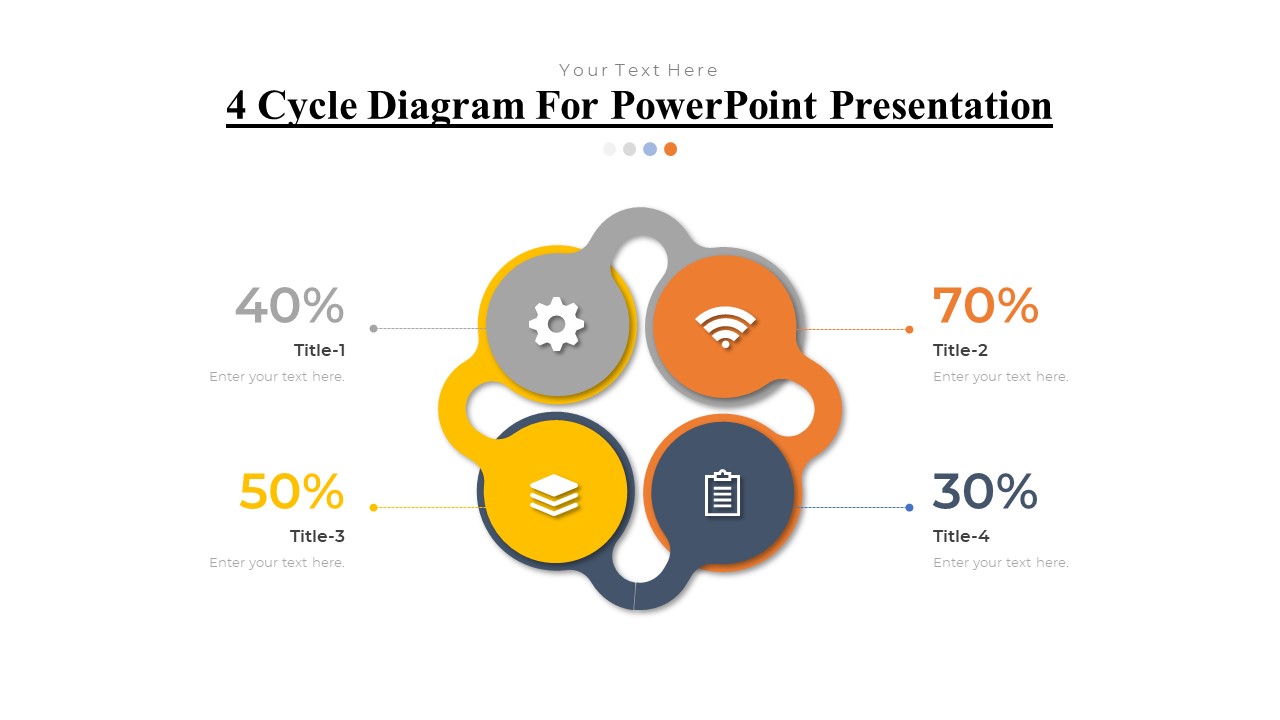
4 Cycle Diagram For PowerPoint Presentation
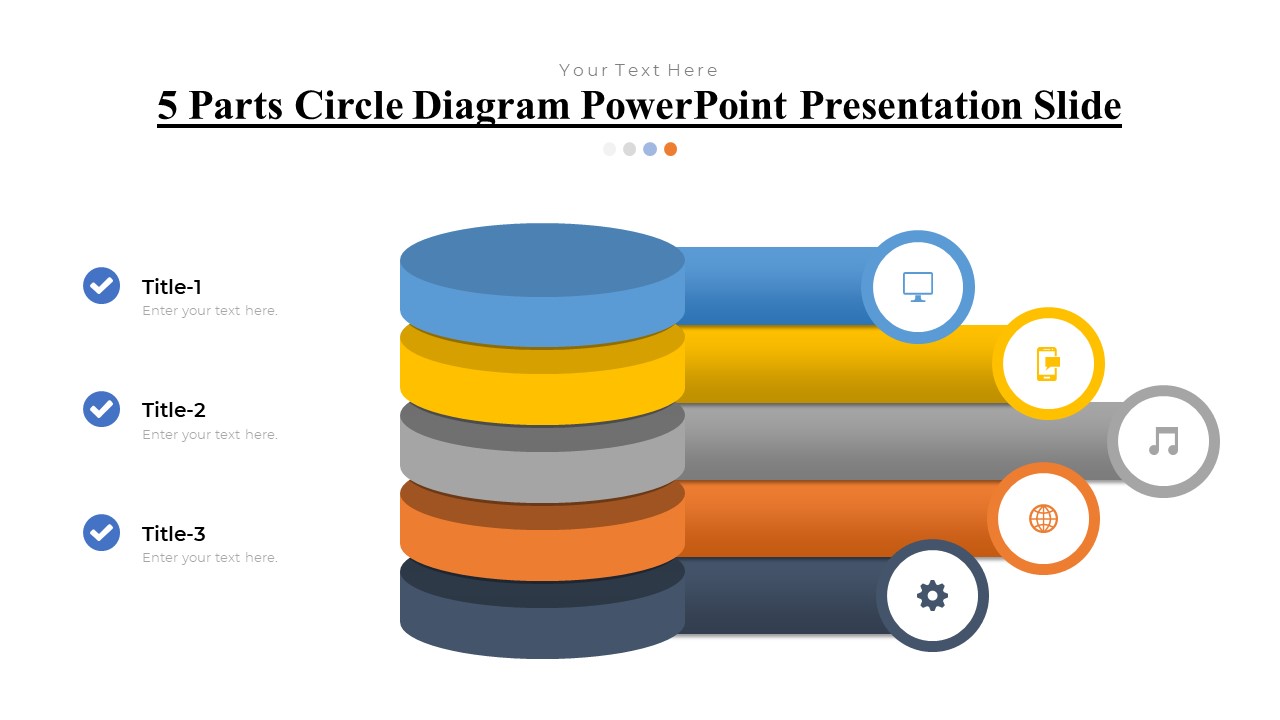
5 Parts Circle Diagram PowerPoint Presentation Slide
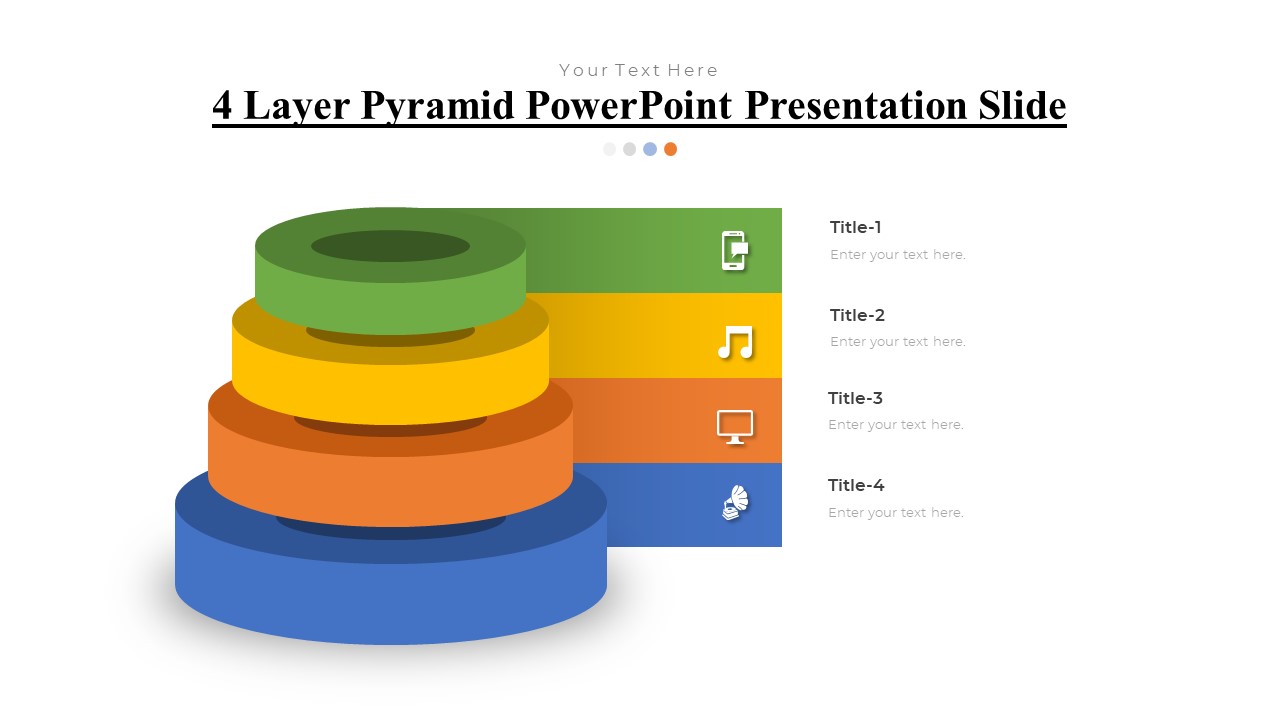
4 Layer Pyramid PowerPoint Presentation Slide
Home PowerPoint Templates Models 8D Analysis One Page PowerPoint Template
8D Analysis One Page PowerPoint Template
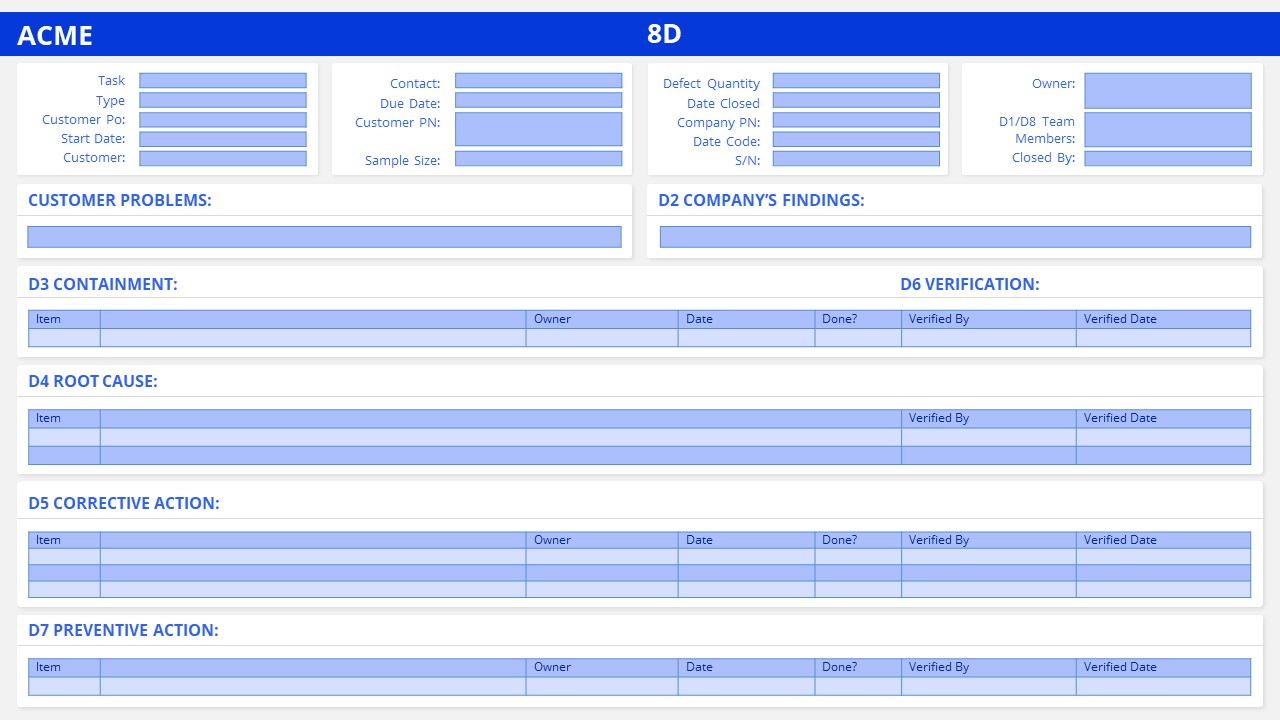
8D Analysis One Page PowerPoint Template is simple descriptive professional presentation templates for the 8 Disciplines of a Problem-Solving approach. Ready for PowerPoint and Google Slides. This presentation template helps structure a problem-solving process in 8 steps. Each step requests information relevant to one of the eight disciplines. These are problem identification, findings, containment, root-cause analysis, corrective actions, implement actions, preventive actions, and recognizing team effort.
The 8D Analysis model is a problem-solving method designed to provide permanent corrective action based on root-cause analysis. This technique focuses on product and process improvement, purposed to identify, correct, and eliminate recurring problems. The One-Page 8D Analysis offers a consistent and easy-to-learn approach to solve problems at various stages of the production process. Professionals in all industries benefit from this model to improve team-oriented problem-solving skills.
High-quality PowerPoint templates of one-page 8D Analysis present comprehensive root-cause analysis and generate 8D reports to share with your team. You can download our Microsoft PowerPoint templates and customize the text for data analysis. The PPT presentation templates of 8D analysis benefit professionals in two ways: facilitating the constructive resolution of the problem and providing a practical understanding of implementing corrective actions. 8D Analysis in slide presentation templates address issues of safety and regulation, customer complaints, high failure rates, and poor performance in a practical one-page report format.
8D report PowerPoint templates are also great for meeting presentations to share a transparent process for all participants. The customer complaints, for example, are received and processed internally through a workflow that incorporates all necessary employees and departments. Once the root cause is identified, it allows the definition of possible corrective actions. 8D reporting format guides staff on team planning, problem identification, disciplinary actions and implementation, preventive measures, and team appreciation.
8D Analysis One Page PowerPoint Template features report form in a grid layout of professional PowerPoint themes. Just add the relevant text in placeholders and present 8D root cause analysis of a problem. The templates initially include simple white and blue PowerPoint backgrounds. However, changing the colors of backgrounds, shapes, and text is quick and easy in PowerPoint.
You must be logged in to download this file.
Favorite Add to Collection
Details (2 slides)

Supported Versions:
Subscribe today and get immediate access to download our PowerPoint templates.
Related PowerPoint Templates

8D (Eight Disciplines) Problem Solving Process
Nov 13, 2022
392 likes | 1.14k Views
[To download this presentation, visit: https://www.oeconsulting.com.sg/training-presentations]
Share Presentation

Presentation Transcript
8D: Eight Disciplines PROBLEM SOLVING PROCESS © Operational Excellence Consulting. All rights reserved. © Operational Excellence Consulting. All rights reserved.
NOTE: This is a PARTIAL PREVIEW. To download the complete presentation, please visit: https://www.oeconsulting.com.sg Learning Objectives 1. Describe the key concepts and principles of 8D problem solving 2. Understand the dynamics of team-based problem solving 3. Define the roles of the 8D problem solving team 4. Familiarize with the use of analytical tools 5. Describe the objective of each step of the 8D process 6. Define the critical success factors for effective 8D problem solving 2 © Operational Excellence Consulting. All rights reserved.
Contents 1. Key Concepts & Principles of 8D Problem Solving 2. Team Approach to 8D Problem Solving 3. Roles of 8D Problem Solving Team 4. Review of Analytical Tools in 8D 5. 8D Problem Solving Process – The Step by Step Approach 6. Preparing the 8D Report 7. Critical Success Factors 3 © Operational Excellence Consulting. All rights reserved.
The Blind Men and the Elephant It is a wall! It is a snake! It is a branch! Problems are often perceived differently by different people. 4 © Operational Excellence Consulting. All rights reserved.
What Is a Problem? A problem is a deviation from a standard, i.e., a difference between what should be happening and what is actually happening Standard – what should be happening Gap = Problem Current situation – what is actually happening 5 © Operational Excellence Consulting. All rights reserved.
What is Problem Solving? § Elimination of the cause of a nonconformity, potential nonconformity or other undesirable condition in order to prevent its occurrence or recurrence 6 © Operational Excellence Consulting. All rights reserved.
What Problem Solving IS NOT § A kaizen event where people are taken away from their “real jobs” for 3-5 days at a time § An exercise to place blame on a person or department § A project only for the Subject Matter Experts or “high- fliers” § Activities to keep people busy during periods of low demand § Another one of those “extra curricula activities” 7 © Operational Excellence Consulting. All rights reserved.
Impact of Problem Solving Holding the Gain - Control Sporadic Departure from Standard (Process Improvement) Problem Solving Original Zone of Control Performance New Zone of Control Time 8 © Operational Excellence Consulting. All rights reserved.
Benefits of Problem Solving § Increased customer satisfaction § Increased market share § Lower costs § Faster delivery time § Increased profitability § Increased efficiency § Improved morale 9 © Operational Excellence Consulting. All rights reserved.
“The problems that exist in the world cannot be solved by the level of thinking that created them.” Albert Einstein © Operational Excellence Consulting. All rights reserved.
What is 8D Problem Solving? § 8D (8 Disciplines) consist of eight distinct steps of a systematic process for solving problems § Process is derived from the best practices of other problem-solving methods such as Kepner-Tregoe, A3, PDCA, etc. § Developed by the US Department of Defense and popularized by Ford Motor Company § 8D is now a standard in the automotive industry 11 © Operational Excellence Consulting. All rights reserved.
Why Use 8D? Common Approach Provides a Structure Teamwork Provides a common language of understanding. Systematic, yet flexible. Superior to other common methods. More skills and creativity. Team buy-in eases implementation. Quality Methods Based on Facts Documentation Tied to quality management philosophies. Use of statistical tool. Let data do the talking. Eliminates personal biases. Standard format for reporting all actions. Sharing of lessons learned. 12 © Operational Excellence Consulting. All rights reserved.
8D Process Model 8 Recognize Project Team 7 Prevent Recurrence 6 Implement Corrective Actions 5 Develop & Verify Solution 4 Identify Root Causes 3 Implement Containment Actions 2 Define the Problem 1 Initiate Project Team 0 Plan 13 13 © Operational Excellence Consulting. All rights reserved. © Operational Excellence Consulting. All rights reserved.
What is a Team? § A team is a group of people who perform interdependent tasks to work toward a common mission 14 © Operational Excellence Consulting. All rights reserved.
“Talent wins games, but teamwork wins championships.” Michael Jordan © Operational Excellence Consulting. All rights reserved.
Why Do We Need Team Building? § The need to quickly respond to changes § Demands for continuous improvement § More effective use of resources § Decision-making and problem-solving is better handled by teams 16 © Operational Excellence Consulting. All rights reserved.
Why is Team Building Important? § To discover new solutions to enhance team effectiveness and cohesiveness § Helps bring out the best in individuals in the form of team work § Improves understanding and helps people respect other people’s views even if they don’t agree with them § Helps in exchange of views and ideas which leads to exciting results 17 © Operational Excellence Consulting. All rights reserved.
What is a Problem Solving Team? § Is a group of employees performing similar or related projects, who get together on a regular basis, to discuss a topic or theme affecting their work or workplace § May be set up by management to look into an issue faced by the customer with the aim to resolve it and prevent similar problems from happening in the future 18 © Operational Excellence Consulting. All rights reserved.
“85% of the reasons for failure to meet customer expectations are related to deficiencies in systems and processes… rather than the employee.” Dr. W. E. Deming © Operational Excellence Consulting. All rights reserved.
The PDCA Approach to Problem Solving § A systematic approach to problem solving § Sometimes called the Deming wheel Act Plan § Provides the framework for a team to carry out improvement Check Do § Used together with the common QC tools 20 © Operational Excellence Consulting. All rights reserved.
Problem Solving Funnel Big vague concern Breakdown Grasp the situation § Actual vs. standard § Actual vs. ideal Go See Point of cause § Time and place where events cause abnormality 5 Why Analysis Why? Root cause Countermeasures 21 © Operational Excellence Consulting. All rights reserved.
8D Process 8 Recognize Project Team 7 Prevent Recurrence 6 Implement Corrective Actions 5 Develop & Verify Solution 4 Identify Root Causes 3 Implement Containment Actions 2 Define the Problem 1 Initiate Project Team 0 Plan 22 22 © Operational Excellence Consulting. All rights reserved. © Operational Excellence Consulting. All rights reserved.
D2: Define the Problem Purpose: Describe the internal and external problem by identifying “what is wrong with what” and detailing the problem in quantifiable terms. 23 © Operational Excellence Consulting. All rights reserved.
D2: Define the Problem Process Problems can be Visualized with a SIPOC Diagram SIPOC diagram for a ‘Display Definition to Deployment’ process Suppliers Inputs Outputs Customers Process Product specifications Needs definition Product Engineering Display at POS Dealers Demonstration technology Business rationale for investment/use Demonstration & Engineering Group Design & prototyping Country Sales reps Message to be communicated Installation manual Preferred environment in which product should be Installers in stores Development Sales Manager /Merchandiser Key dealer specs and business case End-user Production Corp Product Management Problems include missing components, long waiting time of spare parts, displays that are faulty and don’t work, etc. Set-up for deployment 24 © Operational Excellence Consulting. All rights reserved.
D2: Define the Problem Is / Is Not Worksheet IS IS NOT § Who is affected by the problem? § Who first observed the problem? (internal/external) § To whom was the problem reported? § Who is not affected by the problem? § Who did not find the problem? Who § What type of problem is it? § What has the problem? § What is happening? § Do we have physical evidence of the problem in our possession? § What does not have the problem? § What could be happening but is not? § What could be the problem but is not? What § Why is this a problem? § Is the process where the problem occurred stable?§ Why is it not a problem? Why § Where could the problem be located but is not? § Where else could the problem be located but is not? § Where was the problem observed? § Where does the problem occur? Where § When was the problem first noticed? § When has it been noticed since? § When could the problem have been noticed but was not? When § Quantity of problem? § How Much is the problem causing in dollars, people and time? § How many could have the problem but don’t? § How big could the problem be but is not? How Many § What is the trend (continuous, random, cyclical)? § Has the problem occurred previously? (If so attach supporting data/information) How Often § What could the trend be but is not? 25 © Operational Excellence Consulting. All rights reserved.
D2: Define the Problem Examples of Problem Description Z1 fibre broadband outage had affected users in the northern and eastern parts of California for over 2 days. Users in the other parts of California were not affected during the same period. 20% of the blue finished lampshades are consistently rejected for paint runs on the top flat. Defects are not seen before the finish coat is applied. Customers in the western region are dissatisfied with the AvengerFood ordering service. During the past 3 months, errors have increased by 25% while complaints from the other regions have remained stable in the same period. Since the rationalization of the patient registration services at the Kent Ridge General Hospital, complaints of long waiting times have increased by 35% when the patient traffic has increased by only 7%. 26 © Operational Excellence Consulting. All rights reserved.
D4: Identify Root Causes Symptoms § Result or outcome of the problem § What you see as a problem (Obvious) Achy, weak, tired Symptoms Problem The Problem § Gap from goal or standard Fever Causes § “The Roots” – system below the surface, bringing about the problem (Not Obvious) Infection Causes 27 © Operational Excellence Consulting. All rights reserved.
D5: Develop & Verify Solution Countermeasures Selection Criteria Matrix Selection Criteria Matrix (1=Bad, 10=Good) Countermeasures M1 M2 M3 M4 M5 Total Score Countermeasure #1 2 8 6 4 2 22 Countermeasure #2 2 3 6 4 6 21 Countermeasure #3 2 5 5 6 2 20 Countermeasure #4 4 8 3 2 2 19 Countermeasure #5 5 8 5 2 2 22 Examples of Selection Criteria: M1 = Easy to Implement M2 = Feasible M3 = Cost Effective M4 = Robust M5 = Risk 28 © Operational Excellence Consulting. All rights reserved.
D6: Implement Corrective Actions Example of FMEA Process or Product Name: Responsible: Prepared by: Page ____ of ____ FMEA Date (Orig) ______________ (Rev) _____________ Action Results S E V O C C D E T R P N Potential Cause(s)/ Mechanism(s) of Failure Current Process Controls Responsibility and Completion Date Process Function Potential Failure Mode Potential Effects of Failure Recommended Action(s) S EVO CCD TR PN Actions Taken E How often does the cause or The highest value process steps from the C&E matrix. In what ways might the process potentially fail to meet the process requirements and/or design intent? What is the effect of each failure mode on the outputs and/or customer requirements? How can the failure occur? Describe in terms of something that can be corrected or controlled. Be specific. What are the existing controls and procedures (inspection and test) that either prevent or detect occurrence? What are the actions for reducing the occurrence, or improving detection, or for identifying the root cause if it is unknown? Should have actions only on high RPN's or easy fixes. Who is responsible for the recommended action? List the completed actions that are included in the recalculated RPN. Include the implementation date for any changes. How Severe is the effect to What is the new process What is the new severity? How well can you detect Are the detection limits Re-compute RPN after actions are complete. failure mode occur? SEV x OCC x DET the cusotmer? cause or FM? capability? improved? Manager completion of change form Not filled out correctly Outdated employee information in current profile No incentive for Manager to comply completely with requirement HR checklist for projects to be completed upon change in employee status Issue delinquency report C.C. Largelist 5/1/00 Procedure changed to include delinquency report 7/15/00 6 7 3 126 5 2 3 30 Communication from Cust Service to Supporting Dept Representative No direct communication Delayed transfer of customer case No formal liaison Customer complaints ID Dept liaison for all supporting Departments Slim Pickins 8/3/00 Procedure changed, Dept liaisons identified 8/31/00 9 4 8 288 9 2 4 72 0 0 0 0 0 0 After Before 29 © Operational Excellence Consulting. All rights reserved.
D7: Prevent Recurrence Examples of Visual Management (1) Labels for product identification Floor markings for trolley Standard work for a manufacturing cell ‘Do Not Disturb’ labels 30 © Operational Excellence Consulting. All rights reserved.
D8: Recognize Project Team § After finalizing all documentation, you and management must finish in style by showing your appreciation to the problem solving team 31 © Operational Excellence Consulting. All rights reserved.
“Continuous effort - not strength or intelligence - is the key to unlocking our potential.” Sir Winston Churchill © Operational Excellence Consulting. All rights reserved.
About Operational Excellence Consulting © Operational Excellence Consulting. All rights reserved.
About Operational Excellence Consulting § Operational Excellence Consulting is a management training and consulting firm that assists organizations in improving business performance and effectiveness. § The firm’s mission is to create business value for organizations through innovative operational excellence management training and consulting solutions. § OEC takes a unique “beyond the tools” approach to enable clients develop internal capabilities and cultural transformation to achieve sustainable world-class excellence and competitive advantage. For more information, please visit www.oeconsulting.com.sg 34 © Operational Excellence Consulting. All rights reserved.
Operational Excellence Consulting is a management training and consulting firm that assists organizations in improving business performance and effectiveness. Based in Singapore, the firm’s mission is to create business value for organizations through innovative design and operational excellence management training and consulting solutions. For more information, please visit www.oeconsulting.com.sg 35 © Operational Excellence Consulting. All rights reserved.
- More by User

Partnership Overview
Partnership Overview Overview September 25 – October 10, 2010 Largest event to ever come to this region of the country Governed by the Federation Equestre Internationale (FEI) Held every four years, midway between Summer Olympics World Championships for eight Equestrian Disciplines
621 views • 29 slides

Vendor Partner Program
Vendor Partner Program Overview World championships for eight equestrian disciplines Largest Equestrian event in the world Governed by the Federation Equestre Internationale (FEI) Held every four years, midway between Summer Olympics First time held outside of Europe
700 views • 30 slides

North Georgia College & State University
North Georgia College & State University Interdisciplinary Learning Communities in Science Writing Donna A. Gessell Irene Kokkala SRFIDC 2006 Connecting Biology and English students Eight years of collaboration in writing across disciplines
586 views • 38 slides

North Georgia College & State University. Interdisciplinary Learning Communities in Science Writing Donna A. Gessell Irene Kokkala. SRFIDC 2006. Connecting Biology and English students Eight years of collaboration in writing across disciplines
572 views • 38 slides

Inward Disciplines Outward Disciplines Corporate Disciplines
Inward Disciplines Outward Disciplines Corporate Disciplines. From Isolation to Connection. “Christians develop relationships with God and His people when they work together for the cause of Christ, resulting in Kingdom expansion and personal spiritual growth.” P 140. Isolation. Connection.
250 views • 7 slides

8D 課程教材. 上課時間: 1 小時. 8D : 8 DISCIPLINES ( 解決問題的 8 個步驟 ). ☆ 何謂 8D ? D : Stand for Discipline ☆8D 是解決問題一種工具,通常是客戶所抱怨的問題要求公司分析,並提永久解決及改善的方法 ☆ 8D 是透過 team work 的方式,一起解決問題. 8D 的時效限制. ☆ 福雷對客戶的 8D 時效限制 --QA 部門接收客戶抱怨訊息並完成登錄的時效 (3 working hours) -- 回覆暫時管制措施的時效 ( 含例假日; 24 hours)
6.64k views • 32 slides

The 8 Discipline 8D
1.26k views • 88 slides
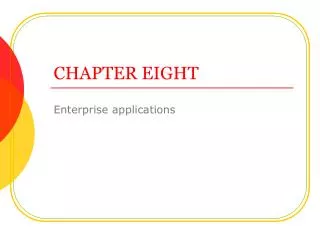
CHAPTER EIGHT
CHAPTER EIGHT. Enterprise applications. Introduction. Supply Chain Management (SCM) Customer Relationship Management (CRM) Enterprise Resource Planning (ERP). SCM / OM. The two disciplines are hopelessly interconnected Your book talks about them separately but I’ll talk about them together
808 views • 69 slides

STEM CAREERS
STEM CAREERS. What are STEM careers? There are eight STEM disciplines identified on the U.S. Department of Labor's O*NET occupational database: 1. Chemistry 2. Computer Science 3. Engineering 4. Environmental Science 5. Geosciences [Earth Sciences] 6. Life Sciences 7. Mathematics
555 views • 7 slides

Jeffrey canning 8D
Viking at sea, trade and exploration. Jeffrey canning 8D . Viking longships.
187 views • 7 slides
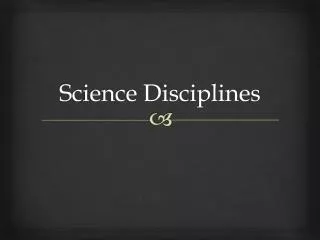
Science Disciplines
Science Disciplines. Homework!!!. Biology. The study of living organisms The Scientists who are involved are called Biologists. Activity. Head outside and identify 10 living things. You will have 10 minutes to complete this task. Chemistry.
1.57k views • 13 slides

The Voic e. Understanding Spiritual Disciplines. Spiritual disciplines are habits that help us fully connect and cooperate with God . Traditional Spiritual Disciplines. Disciplines of Engagement: Disciplines of Abstinence :
309 views • 10 slides
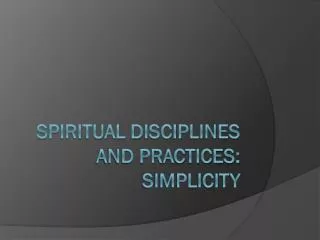
Spiritual Disciplines and Practices: simplicity
Spiritual Disciplines and Practices: simplicity. Abuse of the Disciplines. Abuse of the Disciplines. Discipline. Discipline. However….
250 views • 11 slides
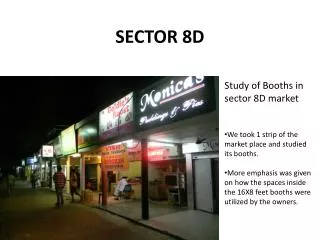
SECTOR 8D. Study of Booths in sector 8D market . We took 1 strip of the market place and studied its booths. More emphasis was given on how the spaces inside the 16X8 feet booths were utilized by the owners. List of shops. Front Side. Back Side. Sweet shop Photo Studio Photo Studio
425 views • 20 slides
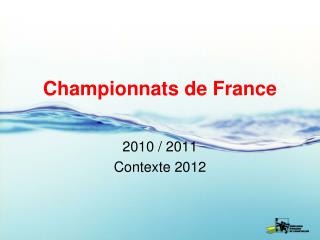
Championnats de France
Championnats de France. 2010 / 2011 Contexte 2012. Bilan de l’instruction. 2010 : 8 disciplines avec 1 seul candidat 1 discipline avec 2 candidats 2011 : 2 disciplines avec 3 candidats 2 disciplines avec 2 candidats 2 disciplines avec 1 candidat 3 disciplines sans candidats. 2010.
182 views • 10 slides

Spiritual Disciplines
Spiritual Disciplines. The Pursuit of Godliness. What is “Discipline?”. Today’s definitions: “training to act in accordance with rules” “activity, exercise, or a regimen that develops or improves a skill” In Biblical context:
446 views • 20 slides

The Engineering Disciplines
The Engineering Disciplines. The number of engineering disciplines is not static. Many disciplines spawn additional sub-disciplines. Let’s focus on the major disciplines!. Aerospace Agricultural Architectural Biomedical Biological Chemical Civil Computer. Electrical Environmental
3.1k views • 50 slides

Google Scholar and Google Web/URL Citation: some evidence of scholarly patterns on the Web. Aims. Correlation between ISI citation counts and either Google Scholar or Google Web/URL citation counts for articles in OA journals in eight disciplines
240 views • 10 slides

SPIRITUAL DISCIPLINES:
SPIRITUAL DISCIPLINES:. Life patterns that direct us to God and disciple us more fully into the likeness of Jesus Christ. NO EXCUSES. God has not given us a spirit of fear, but of power, of love and self-discipline. 2 Timothy 1:7
325 views • 20 slides

Spiritual Disciplines. Or The Anti-Sloth Hour. The Charismatic Tradition – Some Disciplines to Practice. Study the Scripture passages about the Holy Spirit – including the fruit and the gifts.
475 views • 25 slides

Is Business a STEM Career?
Is Business a STEM Career?. Fernando Miranda-Mendoza Raymond Tse Transfer-Mation Leadership Conference October 3, 2014. What are STEM careers?. There are eight STEM disciplines identified on the U.S. Department of Labor's O*NET occupational database: 1. Chemistry 2. Computer Science
202 views • 20 slides

Spiritual Disciplines. Or The Anti-Sloth Hour. SPIRITUAL DISCIPLINES:. Life patterns that direct us to God and disciple us more fully into the likeness of Jesus Christ. The Evangelical Tradition – Some Disciplines to Practice. Pray the Bible out loud 15 minutes daily.
211 views • 17 slides

Aspect Ratio:
File Size: 39.8 MB
Number of Slides: 256
Terms of Usage
Training Presentation/Powerpoint:
8D Problem Solving Process & Tools
Description
The 8D (Eight Disciplines) approach is a systematic problem solving process. Popularized by Ford, the 8D process integrates best practices from various problem-solving methods and is now a standard in the automotive industry. The 8D problem solving process has proven to be highly effective in product and process improvement.
Following the logic of the PDCA cycle, the 8D process enables problem solving teams to identify root causes, develop proper actions to eliminate root causes, and implement permanent corrective action to prevent recurrence. It includes key analytical tools such as Is/Is Not Analysis and Root Cause Analysis using 5 Whys and the Fishbone Diagram.
This highly detailed training presentation will help you to teach employees in your company or organization to better understand team dynamics and solve problems using a disciplined approach.
Note: This training package includes:
8D Problem Solving PPT training presentation (PowerPoint format)
8D Problem Solving Report Template (PowerPoint format)
8D Report Worksheet (Word format)
8D Is/Is Not Worksheet (Excel format)
FMEA Form (Excel format)
8D Problem Solving poster (PDF format, in color and monochrome, printable in A3/A4 size paper)
Learning Objectives
Acquire knowledge of key concepts and principles in 8D problem solving.
Understand team-based problem solving dynamics and define roles within the 8D problem-solving team.
Familiarize yourself with the step-by-step 8D problem-solving process and the use of analytical tools.
Gain practical insights for achieving success in 8D problem solving.
Contents
1. Key C on cept s and Principles
• The Blind Men and the Elephant • The Mindset of a Traditional Problem Solver • Common Pitfalls in Problem Solving • What is a Problem? • What is Problem Solving? • What Problem Solving is Not • Impact of Problem Solving • Problem Solving Funnel • Problem Solving Philosophy • Benefits of Problem Solving • What is 8D problem solving? • Applying 8D Met hodology to Problem Solving • Why Use 8D? • 8D Problem Solving Process
2. Team Approach and Roles
• What is a Team? • Types of Teams • Importance of Team-based Approach to Problem-solving • Qualities of an Effective Team • Team Member Ground Rules • Tuckman's Model of Team Development Stages • Why is Teamwork Important? • Problem Solving Team's Maxims • Ingredients for Problem Solving Team Success • Keys to Team Success • What is a Problem Solving Team? • Key Roles in 8D Problem Solving
3. 8D Problem Solving Process
• Popular Problem Solving Methods • 8D Problem Solving Process • 8D Problem Solving Process vs 8D Report • The Importance of an 8D Report • D0: Plan • D1: Initiate Project Team • D2: Define the Problem • D3: Implement Containment Actions • D4: Identify Root Causes • D5: Develop and Verify Solution • D6: Implement Corrective Actions • D7: Prevent Recurrence • D8: Recognize Project Team • The 8D report: Capturing Solutions and Progress • Sample 8D Report / Template • Key Sections of the 8D Report • The Role of the 8D Report • 8D Report Templates Included (as part of this training presentation package)
4. Analytical Tools in 8D
• Brainstorming • Affinity Diagram • 5W2H • Is / Is Not • Control Chart • 5 Whys • Cause and Effect Diagram • Pareto Chart • Histogram • Scatter Diagram • FMEA
5. Practical Tips for Success
• Best Practices for 8D Problem Solving
Yo u may also be interested in the following training presentations (sold separately):
A3 Problem Solving Process & Tools
PDCA Problem Solving Process & Tools
5 Steps of Problem Solving
Business Process Reengineering (BPR)
Problem Solving & Visualization Tools
Advanced Product Quality Planning (APQP)
Failure Mode & Effects Analysis (FMEA)
Mistake-Proofing
Total Quality Management
Root Cause Analysis
Reducing the Cost of Quality
8D/ 7STEP PowerPoint Template
8D/ 7STEP templates for organizing an efficient quality and complaint management.
Instant Download:
- 100% Editable Powerpoint Slides / Graphics
- Outstanding Customer Support
- SSL Secure Payment
- Made in Germany
- Information
- Template (16:9)
- Template (4:3)
Utilize this comprehensive set with project templates and definitions for 8D/ 7STEP , two methods for systematically analyzing problems and developing sustainable strategies.
Complaint Management in Eight Steps
8D stands for eight processing steps (eight “disciplines“) that are important for solutions to a problem. It provides a systematic approach that not only overcomes a problem in the context of quality assurance, but can also avoid any further occurrence. The 7STEP model has the same objective and almost the same measures, however in seven steps. Both methods are independent, but basically similar to each other. They essentially offer similar solutions for problems and errors that require immediate action, such as customer complaints.
Systematic Problem Solving
The seven or eight steps for developing a solution can be roughly divided into three phases. The first is aimed at understanding the problem in order for an immediate action to take place without involving the customer. In the second phase, the problem is intensively analyzed until the exact cause is found. Therefore, the 5-W Method (5 Why’s) is a handy tool. By applying the repetitive “Why?“ questions, you can narrow down the causes of the problem to its root. In the final stage, the solution found is not only locally implemented, but is embedded within company, which prevents this same problem from occurring again elsewhere.
You can find templates for both 8D and 7STEP methods in this set. Included are also road maps and Gantt charts, which you can use as structural guidelines for concrete implementation in your company. With the help of several slides, each step can be individually explained in detail. Furthermore, this set includes tools useful for quality assurance. Included is the Japanese Poka-Yoke principle, whose aim is error proofing products.
Complaint Management with 8D/ 7STEP provides,
- a systematic approach for dealing with complaints
- a method for structuring constant improvement and avoiding further errors
- several analytical tools for quality assurance
PowerPoint Templates Include
- 8D and 7STEP definitions and features
- comparison of both methods
- road maps and Gantt charts
- structuring processes by using a standard form
- overview of 8D or 7STEP method steps
- detailed slides of each step
- slides for concrete examples
- an audit checklist for monitoring quality management
- chart templates (bar, column, and process flow charts)
- correlation or scatter plots (scatter plots)
- error log sheet for evaluating frequency of errors
- Failure Mode and Effects Analysis (FMEA)
- cost-benefit analysis
- process capability
- qualification matrix
- cause-effect chart (Ishikawa diagram)
- pareto chart and the 80/20 rule
- Poka-Yoke principle
- PDCA cycle (Deming)
- 8D and 7STEP in conjunction with FMEA and Six Sigma

Infographics Bundle
Flat design – presentation people bundle, change management bundle, 150 strategy & management models, agile management bundle, gearwheel bundle, project charter, growth mindset, project canvas, artificial intelligence, gdpr: data protection powerpoint template, digital transformation, corporate services.
We’ll optimize your existing PowerPoint presentation and create slides in your corporate design.
New PowerPoint Templates
We are continually bringing you new PowerPoint templates on current business topics and in modern designs.
Home Collections Strategy / Business Plan Problem Solving 8D Problem Solving Template
8D Problem Solving Google Slides and PowerPoint Template
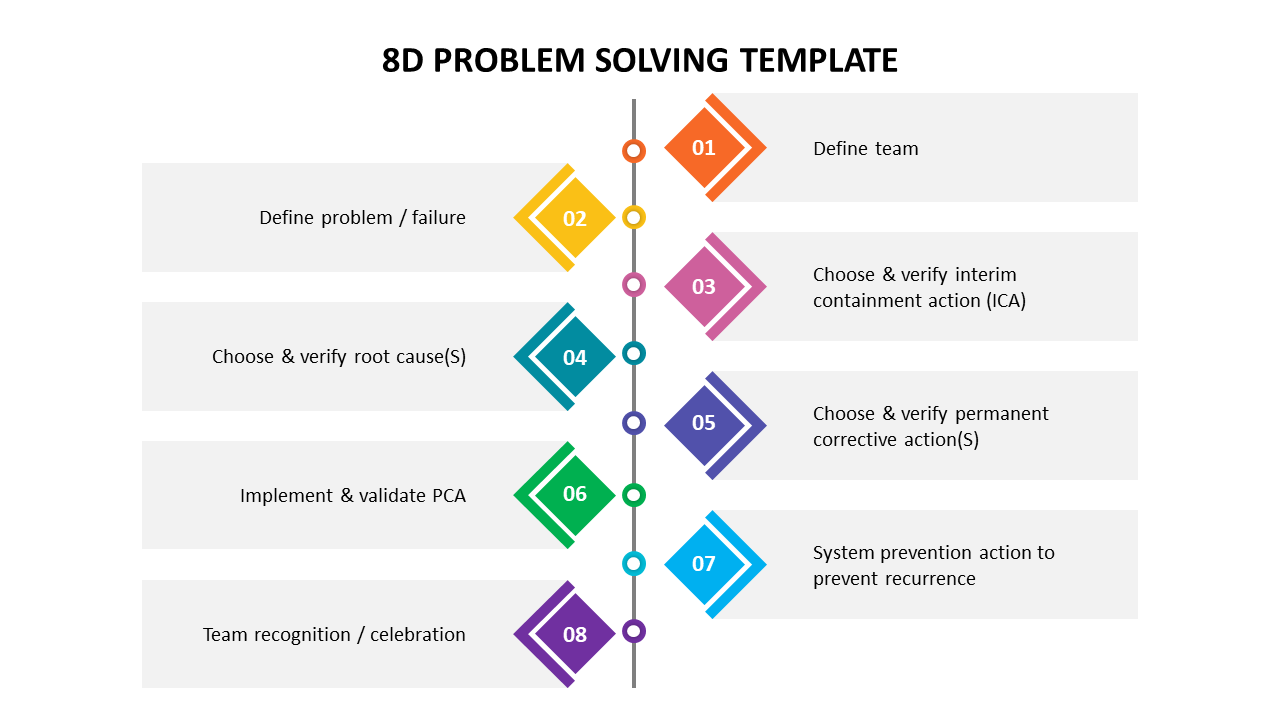
Attractive 8d Problem Solving PPT Template
Features of this template:.
- It is 100% customizable and straightforward.
- The Slides are available in different nodes & colors.
- The slide contained 16:9 and 4:3 format.
- It is easy to change the slide colors quickly.
- It is a well-crafted template with an instant download facility.
- They were given eight nodes and colorful designs.
- problem solving
- Problem Solving
- Critical Thinking
- Problem Solving Stages
- Problem Solving Process
- Problem Solving Techniques
- Root Cause Analysis
- Problem Solving Infographics
- 4 Options Problem Solving
- 8D Problem Solving
- Google Slides
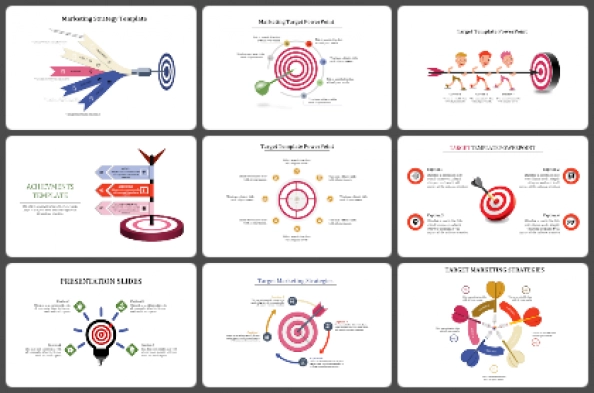
330+ Templates
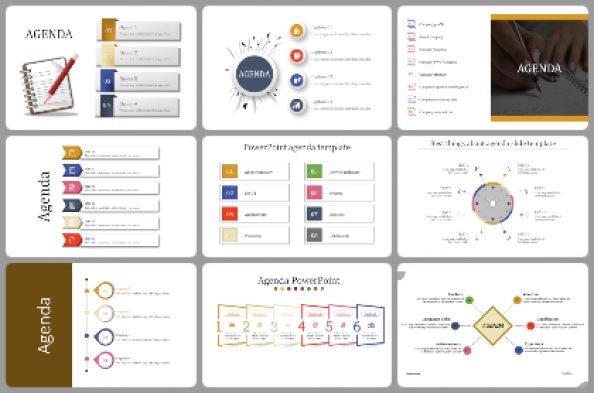
1100+ Templates
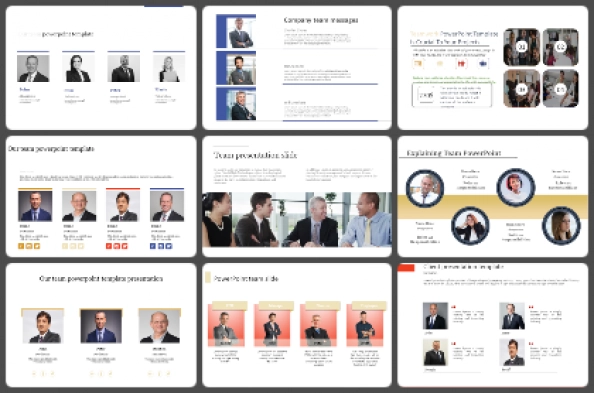
Team / Teamwork
346+ Templates
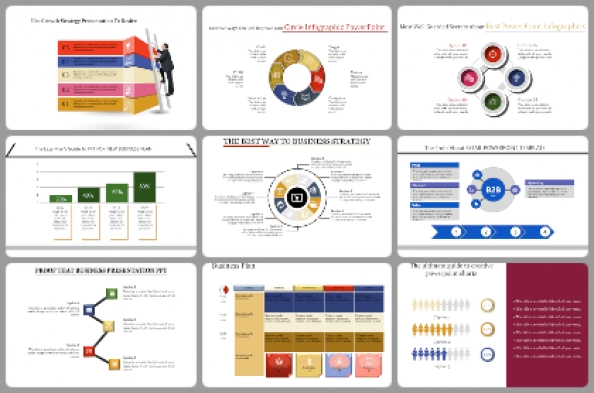
Strategy / Business Plan
6672+ Templates
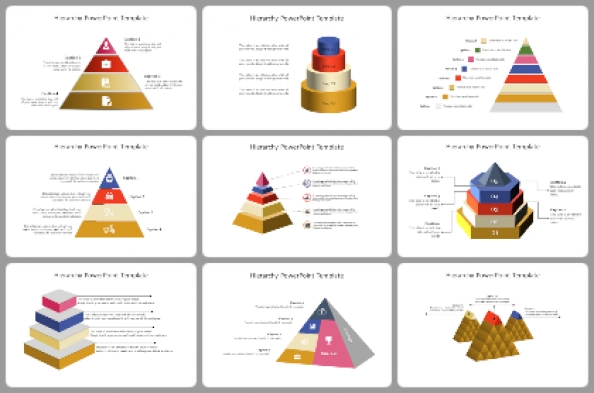
55+ Templates

509+ Templates

413+ Templates
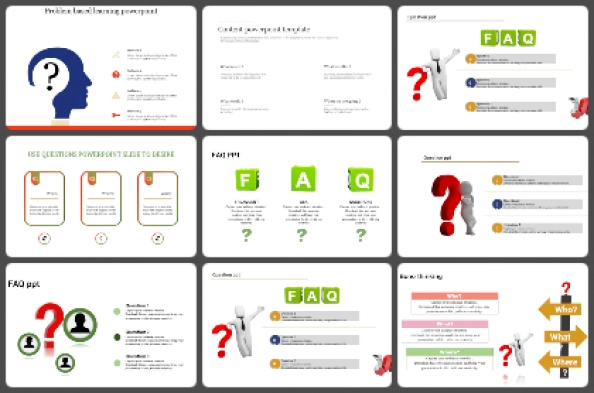
72+ Templates
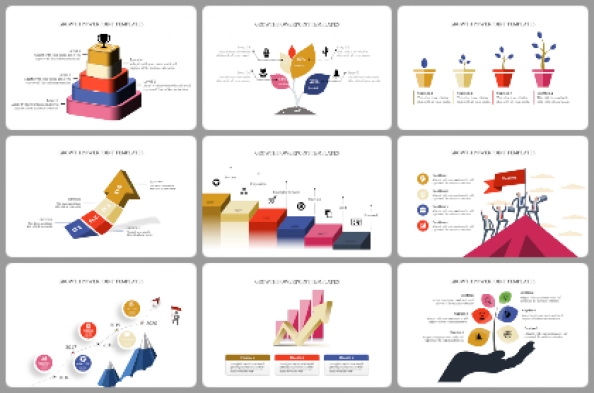
686+ Templates
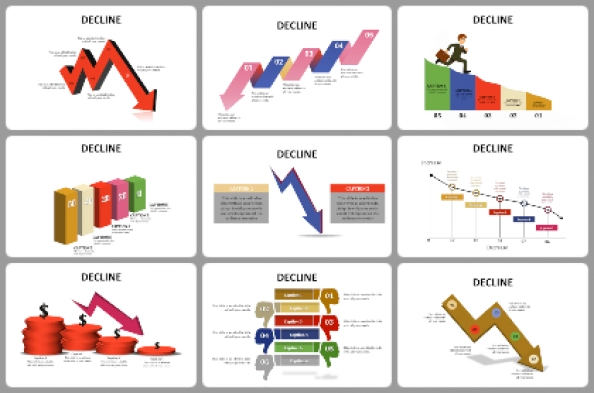
13+ Templates
You May Also Like These PowerPoint Templates


IMAGES
VIDEO
COMMENTS
The 8D process involves 8 disciplines: 1) Define the problem/failure, 2) Establish an interim containment action, 3) Determine the root cause (s), 4) Choose a permanent corrective action, 5) Implement and validate the corrective action, 6) Implement actions to prevent recurrence, 7) Recognize the problem-solving team, and 8) Document lessons ...
The eight disciplines (8D) method is a problem-solving approach that identifies, corrects, and eliminates recurring problems. By determining the root causes of a problem, managers can use this method to establish a permanent corrective action and prevent recurring issues. First introduced by Ford, the 8D method offers a consistent way of ...
It involves eight steps, including defining the problem, establishing a team, identifying the root cause, developing and implementing a corrective action plan, verifying the solution's effectiveness, and taking steps to prevent recurrence. The 8D process emphasizes collaborative problem-solving, data analysis, and continuous improvement.
The 8D problem solving process is a detailed, team-oriented approach to solving critical problems in the production process. ... Create a free PowerSlides account to start using 1000's of professional PowerPoint templates. Create a new account. 2. 5. 6, 7. 2. 0. Total Downloads. 3. 1, 4. 8. 5. Clients. Subscribe to Our Newsletter to get ...
8D root-cause analysis is a problem-solving method, mainly used in the manufacturing industry by quality engineers and operations managers. A proven problem-solving technique successfully applied to several other industries, including healthcare, retail, and government. ... You can use this PowerPoint presentation as a visual aid for team ...
Dec 17, 2012 •. 77 likes • 20,284 views. Frank-G. Adler. The 8D Problem Solving Process Training Module v8.0 includes: 1. MS PowerPoint Presentation including 206 slides covering the Global 8D Problem Solving Process & Tools, a Case Study, and 7 Workshop Exercises. 2. MS Word Problem Solving Process Case Study 3.
The 8D Process PowerPoint Presentation is a comprehensive tool designed to help businesses effectively address and resolve problems in their operations. This presentation template provides a step-by-step guide on how to implement the 8D (Eight Disciplines) problem-solving methodology, which is commonly used in industries such as manufacturing, healthcare, and technology. With visually ...
The 8D problem solving model establishes a permanent corrective action based on statistical analysis of the problem and focuses on the origin of the problem by determining its root causes. Although it originally comprised eight stages, or disciplines, the eight disciplines system was later augmented by an initial planning stage. ...
8D Analysis One Page PowerPoint Template is simple descriptive professional presentation templates for the 8 Disciplines of a Problem-Solving approach. Ready for PowerPoint and Google Slides. This presentation template helps structure a problem-solving process in 8 steps. Each step requests information relevant to one of the eight disciplines.
8D problem solving PowerPoint template presents circular and arrow PowerPoint designs for 8D problem-solving presentation. This template contains ten slides in black and white background. 8D problem solving is the root cause analysis model mainly used to identify, correct, and erase recurring problems. The arrow timeline presetantion contains ...
To download the complete presentation, please visit: https://www.oeconsulting.com.sg Learning Objectives 1. Describe the key concepts and principles of 8D problem solving 2. Understand the dynamics of team-based problem solving 3. Define the roles of the 8D problem solving team 4. Familiarize with the use of analytical tools 5.
There are two main differences between the two processes. In the illustration, the team formation (step 1 in Figure 8D) and the conclusion of the problem-solving process (step 8 in 8D) are not present in 7STEP. However, in theory, these steps also exsist in 7STEP, as in you start by gathering a team and you end with a final conclusion.
Problem Solving Cycle PowerPoint and Google Slides Template. (7 Editable Slides) Details. Reviews 1. Represent the process of 8 Disciplines of Problem Solving and connect it with your industry seamlessly with the help of this professional editable PowerPoint Template. Originally proposed by Ford Motors, the 8D problem-solving technique is a ...
8D / 7STEP. PowerPoint Presentation. The process model for systematic and sustainable problem solving. 8D stands for 8 steps of this process model and contains a guide that guides you through every problem solution in your company in a structured manner. The 8D / 7Step model is used for problems in which, in addition to sustainable problem ...
The 8D (Eight Disciplines) approach is a robust and systematic problem solving process. The process follows the logic of the PDCA cycle, and enables problem solving teams to identify root causes, develop proper actions to eliminate root causes, and implement permanent corrective action to prevent recurrence. This 8D PPT training presentation will help you to teach employees in your company or ...
The 8D Problem-Solving Process animated presentation template is a powerful tool designed to assist you in presenting and explaining the 8D problem-solving methodology in a visually engaging and dynamic way. This template, compatible with both PowerPoint and Google Slides, features a sleek and modern design that will captivate your audience's ...
206-slide PPT PowerPoint presentation (PPTX) on The 8D Problem Solving Process & Tools with a supplemental Zip archive file document. The 8D Problem Solving Process has become a standard in many industries as problem solving or improvement process, as internal Corrective Action Request (CAR) Process or as Supplier Corrective Action Request (SCAR) Process.
Buy PowerPoint Template. 5. Kepner-Tregoe Method PowerPoint Template - Creative PPT Template to Discover the Practical way to Make the Best Decisions Under Pressure. The Kepner-Tregoe method is a problem-solving and decision-making technique developed in the 1960s by Charles H. Kepner and Benjamin B. Tregoe.
8D stands for eight processing steps (eight "disciplines") that are important for solutions to a problem. It provides a systematic approach that not only overcomes a problem in the context of quality assurance, but can also avoid any further occurrence. The 7STEP model has the same objective and almost the same measures, however in seven steps.
Buy Now. Preview. Description. The 8D (Disciplines) Problem Solving Process Training Module v11.0 includes: 1. MS PowerPoint Presentation including 205 slides covering the Global 8D Problem Solving Process & Tools, a Case Study, and 9 Workshop Exercises. 2. MS Word Problem Solving Process Case Study. 3.
The 8D Report was first used by quality engineers and operations managers in the automotive industry (Ford Motors). This collection of ready-to-use PPT graphic presentations of (8D) Eight Disciplines of Problem Solving for PowerPoint contains 21 Creative and fully editable slides with many variations options. You can easily modify color themes ...
The 8d problem-solving template is one of the best templates with eight nodes that can make the audience attracted to the presentation. The nodes are given in arrow design with a tag adjacent to it that it will be helpful to add the text in the rectangular portion in the template. The multiple colors used are attractive and are vibrant to make ...